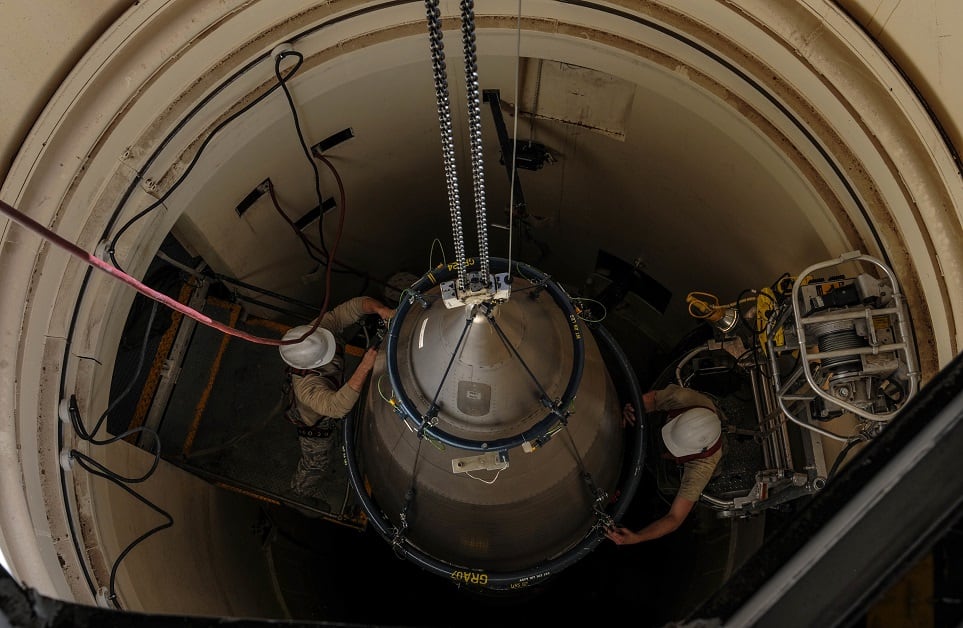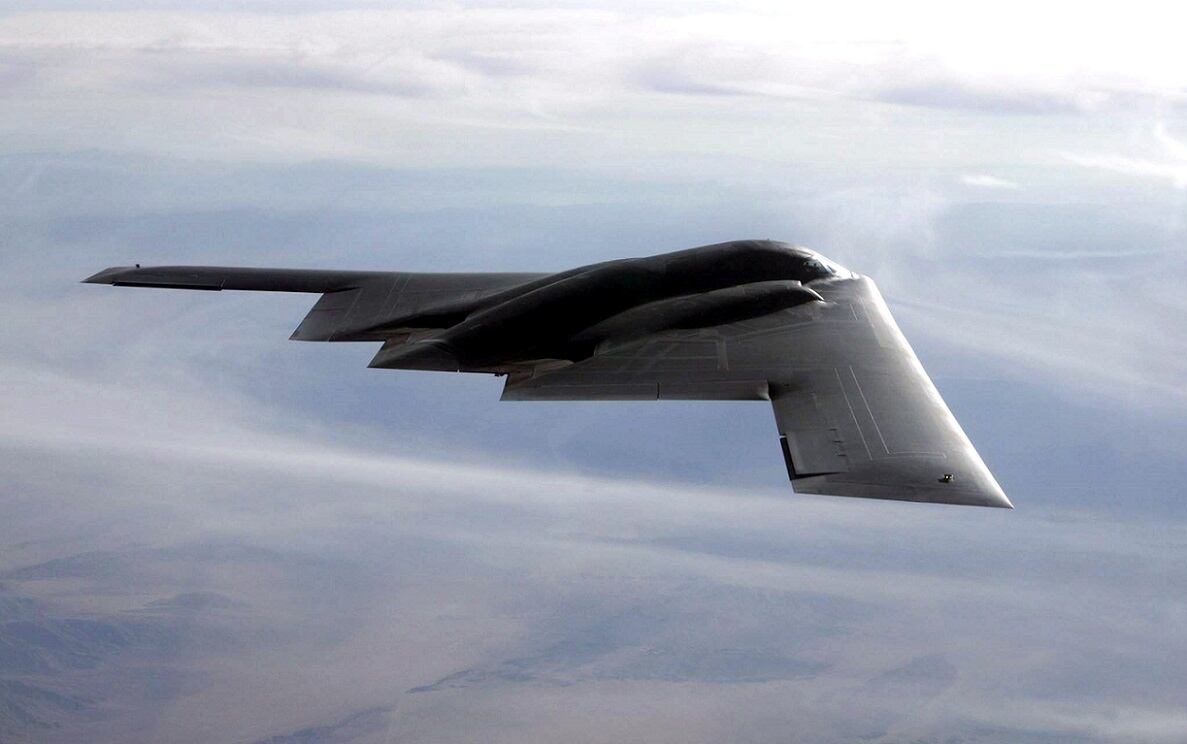OFFUTT AIR FORCE BASE, Neb. — In 2014, “60 Minutes” made famous the 8-inch floppy disks used by one antiquated Air Force computer system that, in a crisis, could receive an order from the president to launch nuclear missiles from silos across the United States.
But no more. At long last, that system, the Strategic Automated Command and Control System or SACCS, has dumped the floppy disk, moving to a “highly secure solid state digital storage solution” this past June, said Lt. Col. Jason Rossi, commander of the Air Force’s 595th Strategic Communications Squadron.
RELATED

Think of SACCS as the U.S. nuclear force’s version of AOL instant messenger — one of the many old, duplicative systems used by U.S. Strategic Command to send emergency action messages from nuclear command centers to forces in the field. Based in Offutt Air Force Base, Neb., the 595th is charged with upkeeping SACCS and ensuring its day-to-day operations.
"I joke with people and say it's the Air Force's oldest IT system. But it's the age that provides that security,” Rossi said in an October interview. "You can't hack something that doesn't have an IP address. It's a very unique system — it is old and it is very good."
In 2016, the Government Accountability Office wrote that SACCS runs on an IBM Series/1 computer dating from the 1970s and that the Defense Department planned “to update its data storage solutions, port expansion processors, portable terminals and desktop terminals by the end of fiscal year 2017,” but it’s unclear whether those upgrades have occurred.
Col. Hayley James, deputy group commander for the 595th Command and Control Group, acknowledged that the Air Force is seeking a replacement for SACCS, but both she and Rossi declined to comment on that effort. Asked about ongoing modernization of the current SACCS system, Rossi would only acknowledge that the Air Force has made recent enhancements to enable speed or connectivity.
Software and Soldering Irons
It’s not easy maintaining an IT system that dates from the same era as disco.
Both active-duty and civilian personnel are needed to keep SACCS operational, but most of the active-duty maintainers working on the system are young and less-experienced. Many come from the “cyber transport” career field, meaning that they are trained to manage modern IT infrastructure, not antiquated systems like SACCS that require maintainers to learn skills like how to solder metal, Rossi said.
“I have guys in here who have circuits, diodes, and resisters memorized,” he said. “They use a TO [technical order] to make sure they’re right, but these guys have been doing it for so long, when the parts come in, they can tell you what’s wrong just based on a fault code or something. That level of expertise is very hard to replace. It’s not sexy work. It’s soldering irons and micro-miniature microscopes.”

One of the guys doing that work is Robert Norman, a civilian Air Force employee with more than four years of experience fixing the electronics on SACCS.
“Any electronic repair is going to take a lot of work. I shouldn’t say it’s difficult, [but] unfortunately a lot of the newer electronics are plug and play,” he said, explaining that when electronic components like motherboards or microchips break on newer systems, the common practice is to throw out them out and replace them. On SACCS, all of those pieces are repaired — which for maintainers could mean spending hours spent under a microscope, slowly but deliberately replacing a copper wire laced throughout a circuit board, for example.
“The challenges get a little larger when we’re actually repairing them down to component level,” he said.
It’s work so specialized that the Air Force hired civilians to fix SACCS components rather than teaching the trade to airmen, who would need years of training to achieve the competency of the employees currently working in the repair shop, some of whom have more than a decade of experience on the job.
Instead, airmen are responsible for diagnosing problems with the system, testing components and then handing off faulty ones to civilian maintainers for repairs.
“The biggest challenge is training. A lot of young folks aren’t exposed to this kind of system and it usually takes quite some time for everyone to get trained up and to be able to work with an older system like this,” said Senior Airman Aaron Mentch, a network technician who has worked on SACCS for about a year.
RELATED

While SACC’s hardware is decades old, its software is constantly refreshed by young Air Force programmers who learn software development skills at Offutt’s Rapid Agile Development Lab. Most work on the software and interfaces seen by end-users like intercontinental ballistic missile launch crews, rewriting legacy code to make it more modern and sustainable, said Master Sgt. Travis Menard, 595th SCS’s programming section chief.
SACCS programmers sometimes get the opportunity to play around with different coding techniques by creating apps for Global Strike Command, but the daily job of updating SACCS’s code isn’t the most glamorous job for an Air Force programmer.
To help keep airmen engaged, the 595th’s most promising programmers are regularly sent on short-term assignments to Air Force software development hubs like Boston-based Kessel Run or Los Angeles-based Kobayashi Maru, or to the Shadow Operations Center at Nellis Air Force Base, Nev.

“When they do understand the impact that they have on the mission, they’re much more excited to come in and be working on it, but at the same time we want to create those environments to work on modern software and give them opportunities to go and participate with other organizations that are doing other flavors of development,” Menard said.
“We are sending our best and brightest out to those other programming entities,” Rossi added. “We have an airman that is heading out this month to Kessel Run — trained here, went and did a [temporary duty assignment] to Kessel Run and was by name requested for Kessel Run. We’re more of a training ground.”
Valerie Insinna is Defense News' air warfare reporter. She previously worked the Navy/congressional beats for Defense Daily, which followed almost three years as a staff writer for National Defense Magazine. Prior to that, she worked as an editorial assistant for the Tokyo Shimbun’s Washington bureau.





